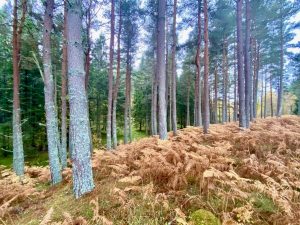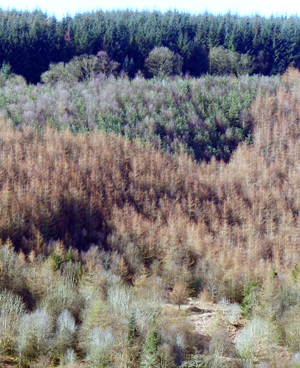Restoring and rewilding initiatives.

At the end of the last Ice Age, the British Isles were recolonised; plant and animal species from the continent moved across the 'land bridge’ (doggerland) that connected us to Europe. Trees, shrubs and plants began to move into the areas ‘released’ from the ice sheets, forests formed in many places. At first, the forests were largely coniferous and they extended across the north of the UK to swathes of Europe and Asia: they formed an enormous area of boreal coniferous forest. This vast array of trees provided shelter and food for a variety of animals - wolves, lynx, elk and many other species.
Since the Ice Age, forests and woodlands have been cut down for farming; trees felled for timber, sheep and deer ate young shoots and stopped native trees (like the Scots pine) from re-growing. More recently, the need for supplies of timber resulted in the Forestry Commission establishing dense plantations of non-native, fast growing conifers (spruce, larch and various pines). These trees were often planted in large, uniform blocks, creating dark, inhospitable, species-poor barriers for wildlife.

Most of the complex post-glacial ecosystem has been lost, leaving only disconnected fragments of forest. Only small patches of this forest remain in Scotland but there are proposals by conservationists to restore the Caledonian Forest to something of its former glory. The Endangered Landscapes Programme aims to restore habitats (and associated animals) in a sustainable manner. The aim of the Scottish project is to join up many of the fragments of Caledonian Forest with ‘restored areas‘, so that animal species (in particular) can move around - essentially it involves the creation of a joined up landscape with ‘biological corridors’. Further details are available at the Cairngorms Connect project ; also the recent blog on ‘Rewilding Scotland’.
The Cairngorms Connect area has roughly half of the Scottish population of capercaillies. These distinctive and large birds exhibit arena or lek behaviour, this involves courtship behaviour of two or more males in a communal area. One of the aims of the project is provide suitable habitats for the capercaillies, and other species. Just as there is an initiative to restore Caledonian Forest, so other areas of degraded ecosystems are the subject of similar initiatives : for example, Polesia, a lowland region in Eastern Europe characterised by forests and wetlands and closer to home the wetland areas of the New Forest are the subject of attention.
Comments are closed for this post.
